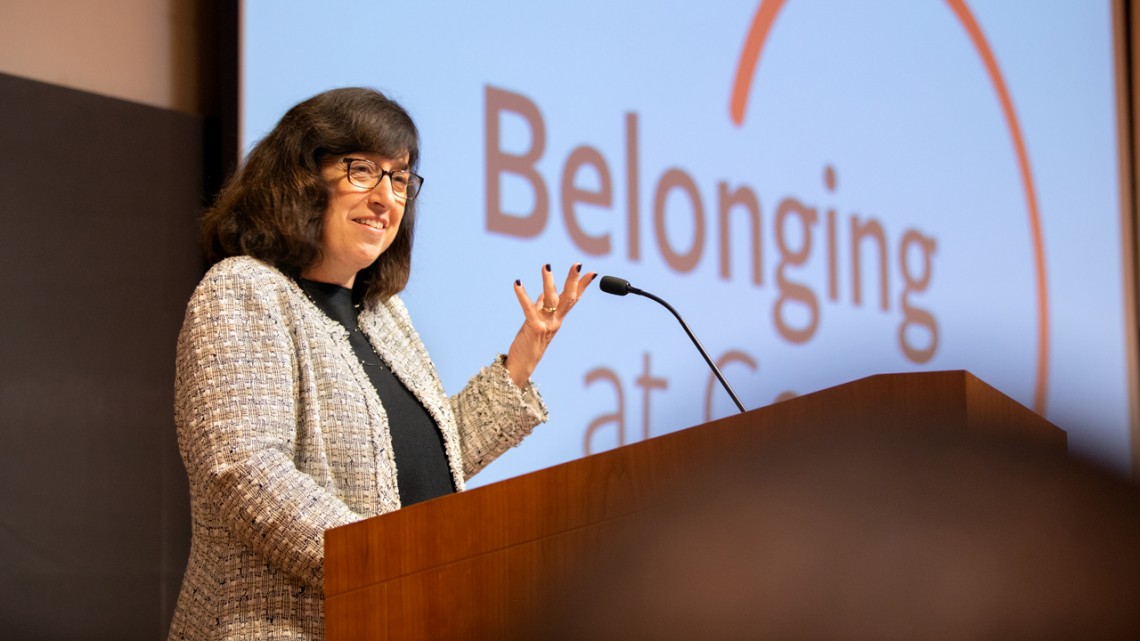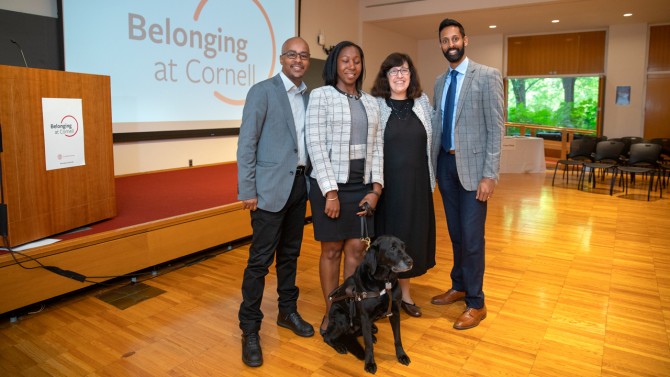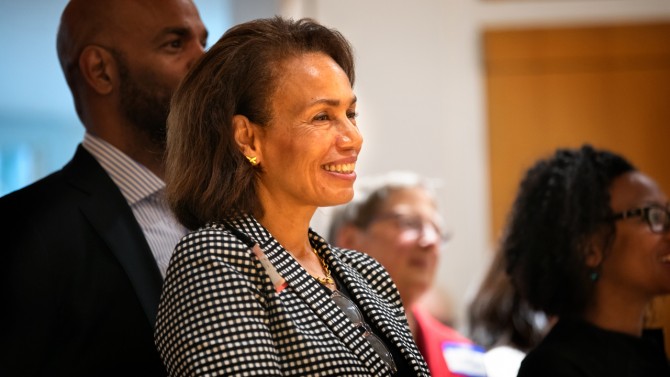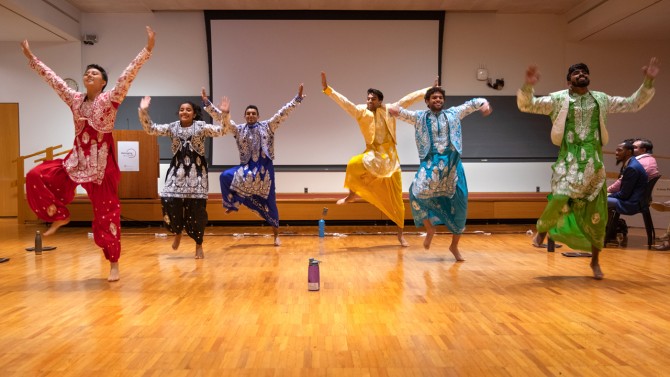
Cornell President Martha E. Pollack speaks at the Belonging at Cornell launch event in the Biotechnology Building.
‘Belonging at Cornell’ initiative aims to see diversity thrive
By Joe Wilensky
Belonging at Cornell, the university’s new guiding framework around diversity and inclusion, was launched and celebrated Oct. 2 with a reception and networking event.
An institution like Cornell University isn’t simply composed of the land or the buildings, as beautiful as they may be, said Avery August, vice provost for academic affairs – but is made from the community that’s here.
“The community determines the culture, and that determines our climate,” he said in welcoming about 150 guests. “So working to ensure that this climate is one in which everyone belongs and feels included is a key aspiration of the Belonging at Cornell initiative.”
The initiative seeks to enhance the experience of faculty, staff and students and continue progress toward creating a community where people from diverse backgrounds and experiences can contribute and thrive. It builds on the work from the Presidential Task Force on Campus Climate and the Provost’s Task Force to Enhance Faculty Diversity, completed last fall.
President Martha E. Pollack called Belonging at Cornell “a signature effort” for the campus community and one that “is not only aspirational, but very practical.”
Compared with past initiatives, she said, Belonging at Cornell incorporates greater accountability, more collaboration and a more thorough implementation of best practices.
The initiative also encourages experimentation with new approaches; offers guidance to help units achieve their goals; and will deploy resources where they are most needed. Progress will be evaluated regularly, Pollack said.
Pollack thanked the Presidential Advisers on Diversity and Equity who led the creation of Belonging at Cornell: August; Angela Winfield, associate vice president for inclusion and workforce diversity; and Vijay Pendakur, dean of students. Victoria White, project leader for the initiative, also received kudos.
Pollack pointed out that Cornell University distinguished itself from its peers from the beginning, in its foundational commitment to diversity and inclusion: the “any person” part of its ethos.
She said Cornell has a duty to be responsible to that “any person” vision, and to take the opportunity to lead by “showing how one builds a community where we can be truly inclusive and equitable.”
“You can’t have excellence without diversity; you can’t have diversity without excellence,” she said. “They’re two sides of the same coin.”
New site, successful programs shared
Winfield gave an overview and tour of the new Belonging at Cornell website, which is live but still “a work in progress,” she said. The site includes the mission, language and framework that colleges and units can use to implement the initiative, and lays the groundwork for them to tell their stories. The site also includes tools to measure whether institutional goals are being met and to promote accountability.
While the new site promotes the university’s common goals and accountability, “it’s not going to solve every diversity or inclusion challenge,” Winfield said. “It’s also not going to get rid of the healthy tension and challenge that comes from having difficult conversations and different points of view in the room. What it is intended to do is allow those diverse perspectives, diverse backgrounds and diverse experiences into the conversation, into the community. That’s the mission.”
Two programs that exemplify the type of belonging that the initiative seeks to promote were showcased:
- Sara Hernandez, associate dean for inclusion and student engagement at the Graduate School, talked about “My Voice, My Story,” a cross-college collaborative program that captures video monologues focusing on untold personal stories by members of the graduate and professional student community, “which has great diversity and great depth,” she said. The videos are paired with facilitated discussion.
- Maureen Carroll, director of admissions for the College of Architecture, Art and Planning, spoke about the Cornell Future Architect Award, an initiative and pipeline program that initially grew out of an alumnus’s concern about a lack of underrepresented minority students in the college’s disciplines, especially in architecture.
Pendakur introduced members of Cornell Bhangra, who staged a lively dance performance, and then described a digital storytelling and public art program Oct. 3-4 that will be open to all Cornellians who want to share their own story of what it means to belong at Cornell.
He then introduced a networking activity for all attendees, asking people to pair up with someone they didn’t know and share what belonging means to them before taking each other’s photos with an instant camera and placing them in a frame.
The point of the exercise lives at the heart of what Belonging at Cornell aims for, Pendakur said: “Meaningful inclusion and meaningful belonging … making connections outside our normal paths of travel.”
Media Contact
Get Cornell news delivered right to your inbox.
Subscribe



